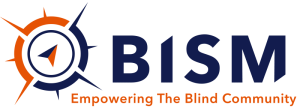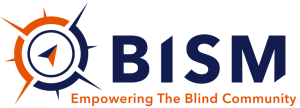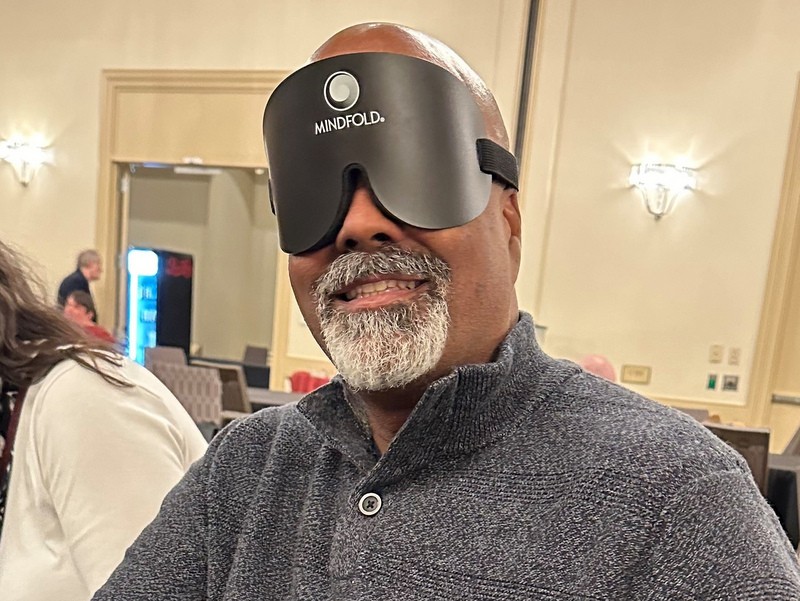BISM’s Immersion Course: To See or Not to See
Shawn’s first-hand look at Shawn’s three-week sleep shade training.
You might wonder, why does one, if given the choice to go under sleep shades, chooses to do so?
When I joined BISM in August of 2018 at the Dover BSC, it was not an option to participate in the Sleep Shade Immersion course until now. Back in 2018, when I first started this was my first-time experiencing working with blind and low vision co-workers, it was amazing to see just how they did the same things I could do, but in a different way. That was the theme I consistently heard, “A blind person can do anything a sighted person can do, just in a different way.” The more I saw the attitudes of the Associates at the Dover BSC, the more I understood that having sight is not a hinderance but more of an obstacle to overcome in the same way we as sighted individuals must overcome obstacles.
Fast forward to 2024, I finally had the opportunity to become a student in our ITR department and experience “blindness.” The positions I held prior did not offer me this opportunity but now as part of the leadership team, I thought it was important to go through the program. So, in February I chose Not to See and training began. It was never a requirement for me to go through Sleep-Shade training, but if I was hired into my current position, I would have gone through it within those first few months, so I wanted to take this opportunity now to better understand what our students do daily in our programs. I had no clue as to what I was getting myself into, but I consistently heard from my colleagues about their experience, and I couldn’t relate. Finally, it was my turn, and my training began.
On my first day I was to get fitted for a cane and given sleep-shades to wear. Anica, BISM’s Manager of Training & Accessibility was my mentor throughout this three-week program and prior to putting on the shades we had an in-depth discussion and watched videos on the philosophy of blindness as well as she sent me documentation on simulation training to read. Then it was onto my first assignment – making my way to the morning meeting! One of the things I noticed right away that BISM is great at, is not enabling the student. Not only did they treat me like any CORE student, but they followed the same program, making me feel very comfortable. I was introduced to the students, as well as assigned to a more senior student who was nearing graduation who led me to my classes. I was amazed at how much they helped me by not helping me. No one tried to grab my hand, my arm, or even my cane to lead me to the classroom. I had to listen to his voice and follow his lead.
Throughout my three weeks I had the core classes of travel, braille, technology, independent living, and woodshop. My day always started with either cane travel or independent living. I am sure in the beginning I put some dents in the walls and file cabinets that lined the way! Learning how to properly use a cane, I must admit, was a challenge. You are using muscles and holding your hands and arms in a different way. The Palm Up method will have your hand cramping in no time, but once you get it, you get it, and it starts to feel natural. The Pencil method was a little more comfortable, though you use each method in various situations. I spent hours walking up and down our hallways looking for certain offices, people, or rooms. All our cane travel instructors have varying methods of teaching, which made the experience that much more enjoyable. Going outside, up and down stairs, crossing a street, and navigating around the building on ice, was intimidating but the reward of accomplishment outweighed the anxiety each time.
Next was braille taught by Dezmond and Jenn. Never in a million years would I have thought I would learn braille! My first couple braille classes, I was given a braille block with six dots on it. I learned on my first day the first ten letters and was even able to spell words with those letters; what a great sense of accomplishment that I felt on my first day! The remaining days, I was able to learn all 26 letters and numbers 0-9, and the ability to read words printed in normal size braille. It was amazing to me how I was able to read braille in such a short amount of time.
Technology was my next class taught by Carley and Dezmond. This was a class I have always been interested in as my background used to be in IT. This class was relatively easier for me as I knew my way around the keyboard but still had to learn how to navigate using JAWs and other function keys.
Home Management or Independent Living was next. This was mainly centered around the kitchen and learning my way around the kitchen and cooking non-visually. Using some of my skills I learned in my Technology class I was able to use the Seeing AI app on my phone to identify the different products in the pantry. I was also able to identify the many seasonings in the cabinet; however, some seasonings I had to taste as I couldn’t tell what they were. I was doing great until I thought baking soda was flour from the touch, but I learned quickly when I tasted it, I was incorrect. I never got those two mixed up again! Learning to center a pan over the gas burner was also a great learning experience. Since I have a gas stove at home, I used the gas stove to work on. Have you ever wondered how to center a pot overheat non-visually? Well, my instructor Laura instructed me how to do just that. By holding the pan in my left hand, and my right-hand hovering over the pan until I felt equal heat on all sides making sure the pan was centered. Then you can adjust the flame and feel the heat rise and lower informing you of how much heat is being used. I had so much fun cooking sausages, eggs, and toast for my students and instructors. Carley loved my food, though she would run every time she smelled food! During my time in the kitchen, I also cut lettuce, strawberries, and baked peanut butter cookies from scratch.
Finally, and probably my favorite was Woodshop with Liz. Our woodshop is like any other woodshop you would find with real hand and electric tools. The only difference is the click ruler. My first task was to measure different lengths using the click ruler. I used an auger to score the wood at the measurements and created cross scores to find the center of the wood. Afterwards, I took the piece to a drill press and drilled holes where I made the cross scores. Liz instructed me how to line up the wood and securely hold it safely to drill the hole. This accomplishment in sleep-shades was unbelievable! I never imagined I would have been able to put 24 holes in a piece of wood! I think I even chuckled at the accomplishment.
During my three weeks there were also a few events I attended under sleep shades. On my second day, yes, my second day I attended an event outside of BISM. Here I was just getting comfortable using a cane inside our building and I had to navigate another building and room. This was the first time I questioned what I signed up for! But Carley assured me I could do it and I was able to navigate with instruction down steps, and outside to participate in the event. Additionally, I attended the National Federation for the Blind’s Annual Maryland chapter conference under sleep shades. Here I stayed in the hotel for the entire weekend, another place I was not familiar with even without the shades on! Anica joined me as my mentor/instructor during the conference and I learned to navigate my way through the conference center, finding the elevator and conference rooms.
My immersion course overall was excellent, and I now understand why it is something BISM wants its Associates to experience. I never once felt unsafe or uncertain, as all the instructors guided me and allowed me to learn on my own. I may lose some of the skills I learned these past three weeks, but I will never forget this experience and instructors and students I met. If you ever get the opportunity to go through the immersion program, I highly suggest you consider it.



